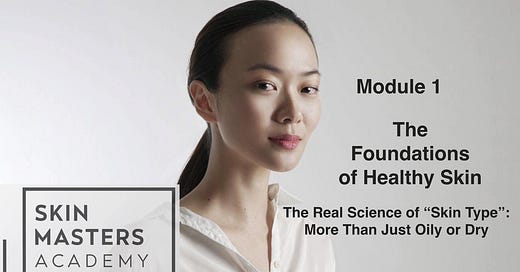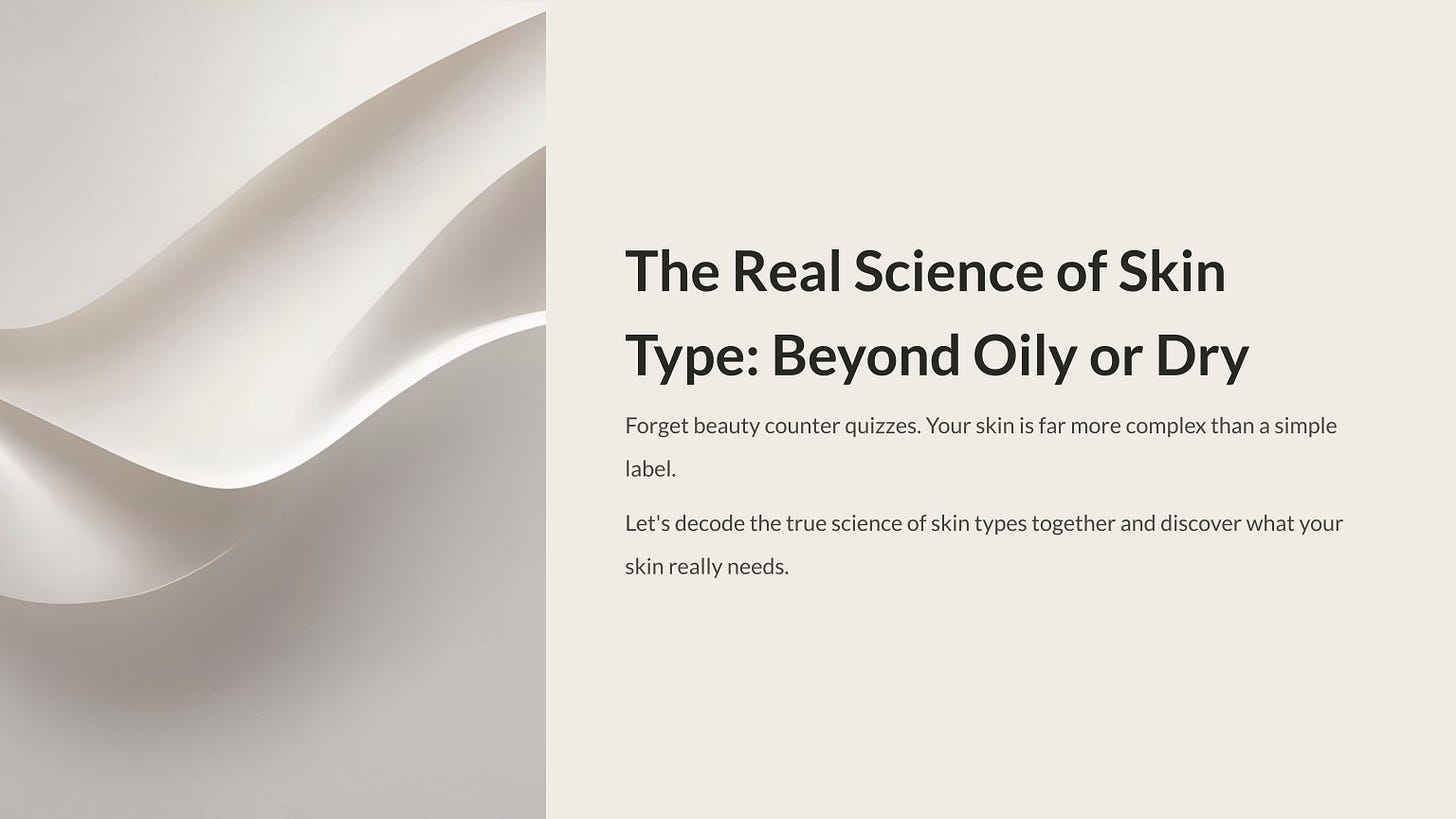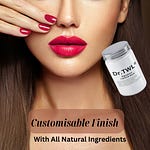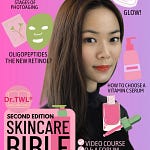The Foundations of Healthy Skin
Hello and welcome to my Substack,
For years, the beauty industry has funnelled us into neat little boxes: you're either 'oily', 'dry', 'combination', or 'normal'. While these categories offer a starting point, they are vast oversimplifications of a complex, living organ. As a dermatologist, my goal is to help you move beyond the labels and truly understand the biology of your unique skin.
Why the "Oily/Dry" Model is Outdated
The traditional skin typing system is based primarily on one factor: sebum (oil) production.
Oily Skin: Characterised by an overproduction of sebum, leading to a shiny appearance and a higher likelihood of clogged pores.
Dry Skin: Characterised by an underproduction of sebum, resulting in a tight, flaky, or dull appearance. It lacks the lipids needed to retain moisture effectively.
Combination Skin: A mix of both, typically an oily T-zone (forehead, nose, chin) and drier cheeks.
"Normal" Skin: The marketing ideal – well-balanced sebum production and adequate hydration.
The problem? This model ignores other critical factors that define your skin's health and behaviour. Sebum production can fluctuate wildly based on your hormones, your environment, your stress levels, and even the time of day. Your skin is not static; it's a dynamic system.
A Dermatologist's Framework for Understanding Your Skin
To build a truly effective skincare routine, we need to consider a more nuanced framework. I encourage my patients to think about their skin across these four key spectrums:
1. Sebum Production (Oily vs. Dry): This is the classic starting point. Does your face feel greasy and require blotting by midday (oily), or does it feel tight and thirsty for moisturiser (dry)?
2. Sensitivity Level (Resistant vs. Sensitive): This is about your skin's reactivity. * Resistant skin can handle a wide range of products and active ingredients without redness, stinging, or breakouts. * Sensitive skin is easily irritated. New products, fragrances, or potent active ingredients can trigger inflammation, redness, and discomfort. Conditions like rosacea, eczema, and contact dermatitis fall on this end of the spectrum.
3. Pigmentation Risk (Non-Pigmented vs. Pigmented): This refers to your skin's tendency to develop hyperpigmentation (dark spots). * Non-pigmented skin rarely develops dark spots after an injury like a pimple or a cut. * Pigmented skin, often more common in individuals with more melanin (Fitzpatrick skin types III-VI), is prone to post-inflammatory hyperpigmentation (PIH) and conditions like melasma.
4. Laxity & Wrinkling (Tight vs. Wrinkled): This assesses your skin's structural integrity and propensity for aging. * Tight skin shows minimal fine lines and maintains its firmness. * Wrinkled skin shows more visible signs of aging, influenced by genetics, sun exposure (photoaging), and lifestyle.
Putting It All Together: What's Your Real Skin Profile?
Using this framework, you might discover you aren't just "combination." You could be:
Oily, Resistant, Pigmented, and Tight: You can handle strong active ingredients like salicylic acid for your oiliness and should be rigorous with sun protection to manage pigmentation risk.
Dry, Sensitive, Non-Pigmented, and Wrinkled: Your focus should be on gentle hydration, barrier repair with ceramides and lipids, and using milder anti-aging ingredients like bakuchiol or lower-strength retinoids.
The Takeaway:
Stop letting a single word define your skin. Pay attention to how it feels and reacts day-to-day. Over the next few weeks, observe your skin through this new lens. In our upcoming posts, we'll explore how to build a core skincare routine tailored to your true skin profile.
Ready to go deeper? Subscribe for my premium posts, where we’ll soon be covering advanced ingredient deep dives and creating personalized routine guides.
🎓 Start your journey to skincare mastery—enrol now in our dermatologist-led Skincare Coach Certification and transform your career with 12 hours of expert training.




















Share this post